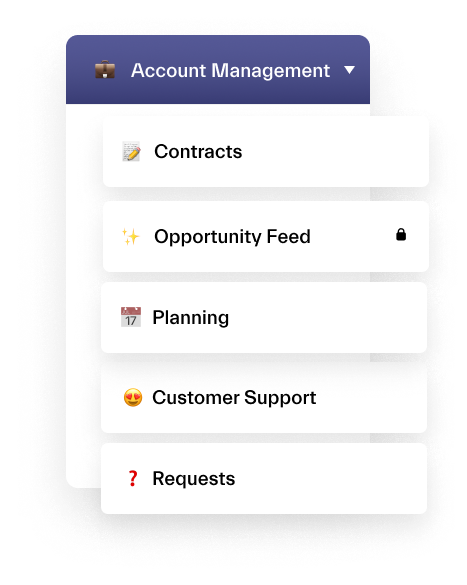Successful salespeople hone their craft, confidently approach potential clients, and close deals on their own. However, a sales representative, like any other talented artist, can benefit from the support of a strong ensemble. In particular, salespeople need to work together to conclude complex deals quickly. Sales collaboration is preferable to perform anything in sales.
Although the sales rep is still the lead singer, the band may benefit from adding an executive sponsor on the keyboard, a sales engineer on drums, a support representative on the guitar, and a marketing representative on the violin.
Due to the complexity of the many steps involved, it is unlikely for one individual to accomplish everything by themselves.

What is sales collaboration?
To put it simply, sales collaboration happens when a group of people work together to achieve a common sales goal, such as closing a sale.
The three main types of collaboration required to reach this common objective are:
- Collaboration among members of the team
- Collaboration between leaders and team members
- Collaboration with the client
Every type of collaboration calls for unified effort, and open sharing of information and strategies. Moreover, effective internal and external communication channels are also necessary.

Levels of sales collaboration
In sales, you can collaborate on three different levels.
Planning
This level includes plans, relationships, and communication and shows how well the company’s strategic direction aligns with the customer’s. The sales team must create and sustain multilevel contacts to promote solid relationships and provide vital information for client decision-making.
Execution
Composing products, processes, and systems illustrate how well providers execute the joint plan by producing exceptional services and solutions. Moreover, they should produce value for consumers, perform processes effectively along the value chain, and establish suitable financial, IT, and legal services support systems.
Resources
People, physical infrastructure, and information are the three fundamentals here. This tier reflects whether the provider has the resources to serve its clients. It can include knowledgeable advisors who put the customer first, an organization structured to put the customer first, and an engaging learning environment where new business may be developed.

Sales collaboration is important for teams
Salespeople will have a more challenging time selling products, answering client questions, and closing deals if they are not interacting with other colleagues or subject matter experts across the firm.
In today’s economy, sales teams recognize that time spent searching for information is money lost. Forbes reports that just 35% of a salesperson’s time is spent on revenue-generating activities. While the rest is spent on administrative tasks and discovering data that customers and prospects require.
Companies are losing business because sales representatives waste time searching for information rather than making progress with potential clients. Having a system in place for managing sales knowledge and encouraging collaboration among sales teams is crucial.

10 tips to drive sales collaboration
Here are ten helpful tips to encourage sales collaboration in your organization.
1. Open up lines of dialogue
Anxiety over being ridiculed by others can limit people from working together productively. Some team members may hesitate to express inquiries for fear of making fools of themselves in front of more senior members or their peers.
There’s a chance they’re also embarrassed to disturb their coworkers with such inconsequential issues. Sales managers need to emphasize that their employees should feel comfortable asking any questions they may have and that it is better to get the answers they need than to make assumptions.
2. Pool your assets
The most productive sales teams have access to as much data as possible. There is no doubt that they can discover this data, but it will require some work on their part. Reduce sales teams’ time spent on inefficient tasks by providing easy access to a shared database of relevant information.

Integrate your company’s data sources into one hub that your sales staff can access from anywhere, whether in the office or out in the field. As they say, knowledge is power, and knowledgeable individuals tend to make the greatest deals.
You can create secure, centralized resource databases for your entire company with the help of nBold’s Collaboration Templates. Reduce the complexity of your sales team’s daily tasks by giving them access to a shared workspace where they can work together and easily navigate through all key documents.

Everything they need to finalize a deal, including proposals, contracts, sales decks, and agreements, is all in one fully equipped digital workspace. Using nBold, our sales teams can stop wasting time searching for what they need and can focus on what matters.
3. Keep tabs on your team’s progress
Seeing real-time prospecting changes in channels and tracking progress via dashboards is made simpler with the right technologies like CRM systems. You can also set KPIs to measure each team member’s performance and improve it with feedback from team leads. These systems generate automated reports to provide detailed insights into each team member. Ideally, you should set KPIs, track them, pinpoint bottlenecks, and address them using the insights.
4. Establish company-wide targets and objectives
Teams can work collaboratively toward the company’s overarching objectives if they have shared aims and objectives. Incorporating a sense of cooperation into the fabric of the business encourages workers to pool their efforts in pursuing the company’s goals, whether those goals are the closure of a potential deal or the approval of some legal conditions. A more positive and cooperative work environment can shorten production times and increase sales.
5. Encourage a collaborative work culture
When sales managers set a good example and work together, their teams are more likely to open up, share, and learn from one another. You can check in with your team by questioning the progress of ongoing projects and receiving comments on any training you have provided.
A collaborative culture can benefit both leaders and teams. It promotes employee engagement, trust, and organizational goals. You can direct workers across departments to cooperate for the common good by fostering openness, dialogue, information sharing, trust, and participation.
6. Set KPIs for the individual and the team
Creating individual and shared KPIs can boost cross-team communication. Using KPIs for performance management can help you determine how well your team, department, or the entire company is doing. Moreover, it helps individuals comprehend their goals and broader team objectives.
Once they have a firm grasp on what is required, they may draw up a plan incorporating any additional resources from their team. This helps determine where greater collaboration is needed to boost cross-functional performance and sales-related indicators.
→Download: Microsoft Teams & Salesforce Integration Guide
7. Integrate proper tools
Providing your sales team with the tools they need to collaborate effectively is more critical than ever in today’s business environment. Purchasing a suitable customer relationship management system is essential so sales representatives may engage with potential clients and record their conversations for future reference.
If you’re worried that having too many systems in place would scatter data and lead to chaos, nBold can help you fill in the gaps by integrating your day-to-day tools, such as CRM software, project management software, or any other 3rd party tool.
You and your team can efficiently work together, share information and complete task from a single digital workspace with all the needed tools integrated seamlessly.


Customize your Collaboration Template to fit your workflow needs and watch your teamwork and efficiency soar.

Guide: Microsoft Teams and Salesforce Integration
- Why you should integrate Salesforce with Teams
- All integration possibilities
- Most demanded use cases
- How to set up the integrations
8. Promote cross-functional collaboration
A recent study found that only 8% of B2B organizations have a strong connection between their sales and marketing departments. Ineffective communication between your sales and marketing departments can have a domino effect on your company’s revenue, conversion rate, and the success of individual salespeople.
Including your sales team in weekly marketing meetings and encouraging them to share knowledge and insights obtained through sales conversations with prospects can pave the way for cross-functional collaboration across sales and marketing teams.
It might be hard to implement when cross-functional collaboration is not intrinsic to the company’s culture from the beginning. That doesn’t mean it can’t happen, though. Team members may ease into a culture of cross-functional collaboration with the support of a clear shared vision, an exemplary leader, and a focus on rewarding teamwork.
9. Clearly define sales territories
As much as we value collaboration in sales, too many people at the table at once might be counterproductive. Define sales areas precisely to prevent conflict amongst sales teams. Make sure you explicitly designate sales regions to prevent competition between sales staff.
A great strategy to ensure sales teams contribute and go above and beyond in establishing team territories. Not only may this distinction reduce tension, but it also has the potential to increase responsibility. Those given responsibility for a particular territory will help others responsible for the same territory.
10. Analyze and optimize
You can learn what is slowing down your sales process and how to fix it by establishing strategies for assessing the workflow of your employees and teams. That way, you can fine-tune your sales process to incorporate the most effective methods and eliminate the steps and transitions that hinder your staff’s productivity.
Employees should be consulted, and their input should be sought to streamline processes like discount approvals and legal terms signing during this evaluation. Identifying problems and working together to solve them is a great way to help your team and boost cross-team collaboration and fundamental procedures simultaneously.
Conclusion
Being the ship’s captain can be a demanding position. Whether you’re in charge of a group or an entire organization, you need to learn to set an example by doing what you preach. Even though there are several approaches to promoting teamwork, it’s best to demonstrate these methods from the get-go.
Call attention to the team’s accomplishments, offer incentives at the appropriate times, and interact with them personally. An email announcing new policies impacts less than a personal meeting with the boss.
Lastly, establishing a policy of open accessibility can serve as a powerful example.
We commit to helping organizations improve their collaboration at scale. Our Collaboration Process Technology allows to create custom templates within Microsoft Teams with pre-built channel structure, file templates, boards of tasks, document libraries and pre-configured 3rd party tools and other key data necessary for efficient collaboration.
Try nBold now to take your sales collaboration to the next level.
